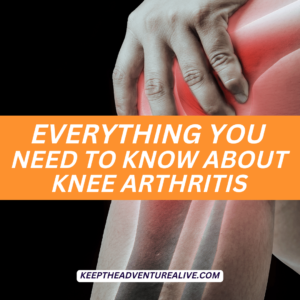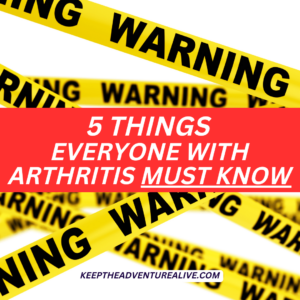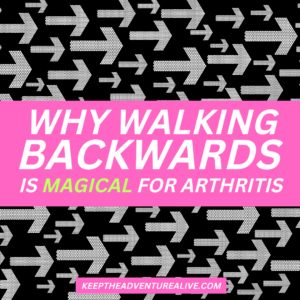If you’ve been diagnosed with osteoarthritis and immediately told a joint replacement is in your future- wow, I’m glad you’re here. This happens entirely too often in the world of osteoarthritis. Contrary to popular belief, it is possible to find joint pain relief and surgery isn’t inevitable. Research actually suggests everyone should attempt conservative treatment (non-surgical options) before opting for surgery. Let’s dive into what that looks like and how you can start finding relief today.
As a physical therapist and an osteoarthritis specialist nothing grinds my gears more than when patients are told things like:
- “You have the joint of an X year old (usually an older age)”
- “You’ll eventually need surgery so try to get by until then”
- “This is the worst joint I’ve ever seen”
Each of these statements makes people feel as though they are doomed with osteoarthritis. It makes it seem like the condition is a death sentence to almost all activities.
Although there is no cure, symptoms can be managed and it is possible to reduce symptoms all together. It is not inevitable the condition will progress. In order to stop the progressing and reduce your pain, you have to take action.
To take the right action, it’s important to know more about osteoarthritis, your pain and what your body needs. You’ll learn the top 5 things you need to know about osteoarthritis in this article.
You can also watch this video below:
5 Things You Need to Know about Osteoarthritis
Unfortunately, many people aren’t told these things and without them, you can be led astray. It can lead you to get surgery prematurely, reduce your mobility, avoid exercise and slowly start to lose the ability to do the things you love most.
Today’s the day that changes.
1. Pain isn't Directly Correlated with Change
Just because you’re in pain, it doesn’t mean your joint is physically changing. It doesn’t mean you are causing “more damage”.
Think about it this way, pain is a way your body communicates with you. It not only protects you but it also notifies you when it isn’t able to keep up.
A smoke alarm is a great analogy. Just because your smoke alarm goes off, it doesn’t mean there is an actual fire. It alerts you to something that is stuck in the toaster or if something is beginning to smoke.
Think of your arthritic joint in the same way. I always like to have patients frame their pain into a question. When you experience pain, think “what is my body trying to tell me?”
Here is an example: Say you are walking around your neighborhood and after 10 minutes you start to feel slight discomfort in your knee. This could be your body saying “I’m not too sure about this but we can keep going”. Then, after 20 minutes you begin to feel significant pain (8 out of 10). This is now a signal your joint is sending out saying “I’ve had enough we have to modify the activity or stop”. This could signal that 20 minutes may be too much for your knee at this time and you may need to reduce the time when you are out walking next.
It may not always be this black and white but reflecting on your pain can help you learn from it. Continuing to push through significant pain isn’t going to make it better. Being able to learn from your pain and interpret it’s signals can play a tremendous role in osteoarthritis pain relief.
2. Surgery isn't inevitable
Going into any pain relieving effort with the thought that surgery is inevitable will likely lead to it not working. There certainly is a time and a place for surgery and it doesn’t mean you’ve failed.
I have an article here that helps you decide the best time for a joint replacement. It is a big decision and should not be made solely upon what your x-ray or MRI looks like…
Not everyone will need surgery. When I was working as a home care physical therapist, helping people after total knee and hip replacements- there were many situations where surgery was done prematurely- meaning before any exercise or other lifestyle factors were addressed.
It is important to implement behavior changes consistently for at least 3-6 months to see if your symptoms can change. You may surprise yourself with your progress. Some of the behavior changes that can be incredibly powerful include:
- Strengthening the full body to support the joints
- Finding an outlet for stress management
- Prioritizing quality sleep as often as possible
- Fueling your body with healthy foods (fruits, vegetables, quality protein)
The key word is consistently. If you are serious about pain relief and potentially avoiding surgery, you have to commit yourself. to this journey. Pick one or two of these behaviors to focus on first. You can do this but only if you put in the effort.
Let me tell you that surgery doesn’t necessarily fix pain completely nor is it the “easy” way out. If you can improve on these behaviors before surgery, you can optimize your recovery.
So either way, focusing on these behaviors above is important in the case of surgery or not.
3. Weight Loss isn't the Only Way to Find Relief
So many people are shamed into blaming their weight on their osteoarthritis pain. Many are told they need to lose “X” weight before considering surgery.
Weight loss can be tough and this can lead you to feel stuck in your pain relief efforts. That pain will only reduce if you lose a certain amount of weight.
I’ve worked with clients who would have been considered to be overweight or even obese who have experienced pain relief without a significant weight loss.
Don’t get me wrong, weight loss can help to reduce pain. BUT it is not the only way.
If you are constantly in pain, weight loss becomes even harder. If you have reduced mobility and loss of range of motion, weight loss becomes even harder.
INSTEAD, focus on the lower hanging fruit. This can include:
- Finding 3-5 simple movements whether seated, lying down or in standing that actually feel good, to complete every day (Example video for some ideas)
- Focus on reducing stress if stress plays a large role in your life- managing it through meditation, movement, art, etc.). Stress can increase your pain sensitivity.
- Try to increase the amount of time you are sleeping by going to bed earlier, avoiding using your phone or watching tv right before bed, doing something relaxing before heading to sleep. Lack of sleep can increase sensitivity to pain.
Each one of these behaviors, once consistent, can make a big difference in your pain levels. As simply as they seem, weight loss can become much easier once you feel less pain. The key is getting started…
4. The Right Exercise Should Make You Feel Better
A common belief is that exercise will actually make osteoarthritis worse. Actually the opposite is true- the lack of exercise can make osteoarthritis worse.
The key for exercise to help your pain is to make sure it’s the right type of exercise. Not every exercise will feel good to you and that’s okay! But, I can assure you there are exercises out there that will.
Movement should not make you feel worse afterwards. If it does, it’s not the right exercise for you. There are millions of ways to modify different exercises and switch things up. If something doesn’t feel good listen to your body.
For example, if chair squats do not feel good to you right now, you could:
- Increase the height of the chair or move to a higher surface
- Use upper body support to push off (i.e arms of a chair, TRX suspension straps etc)
- Try a seated variation to help build foundational thigh (quadriceps) strength
This does not mean you need to push through the chair squats and drive up pain. Instead, change it up so you feel good doing it and actually can reap the benefits.
If you’re unsure what type of exercise you should start with, Adventurers for Life, my arthritis workout membership is a great place to start. It includes an initial test so you are placed in the right Level as well as follow along workouts that meet you where you are right now, led by me.
Here is a peek into the wins current members are experiencing.
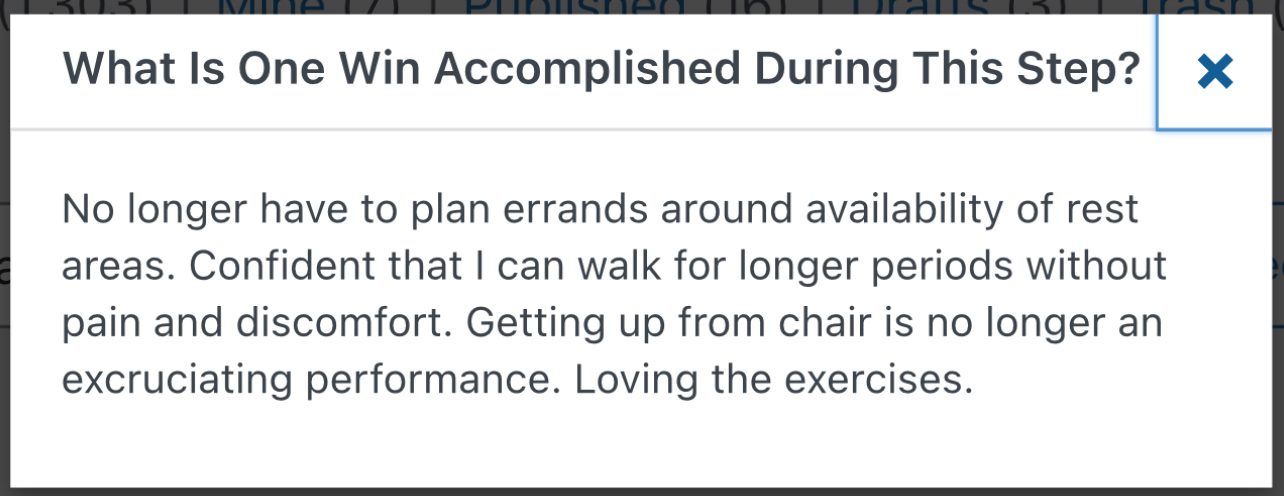
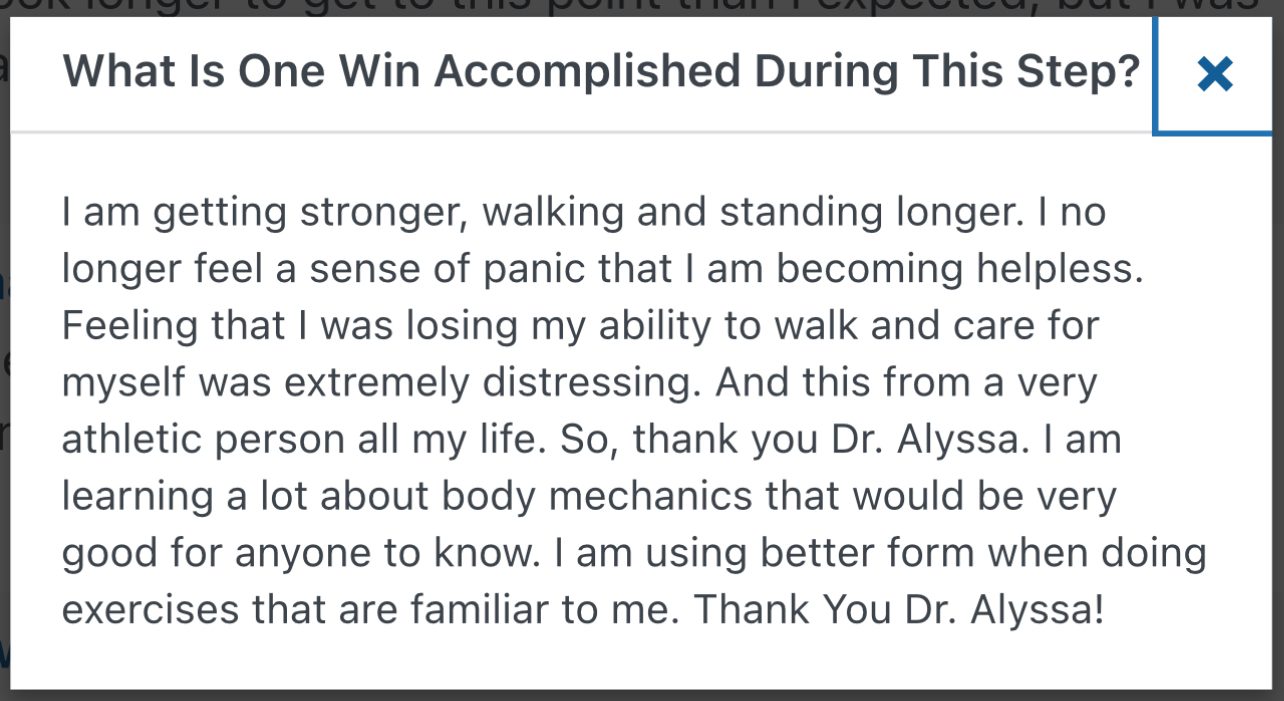
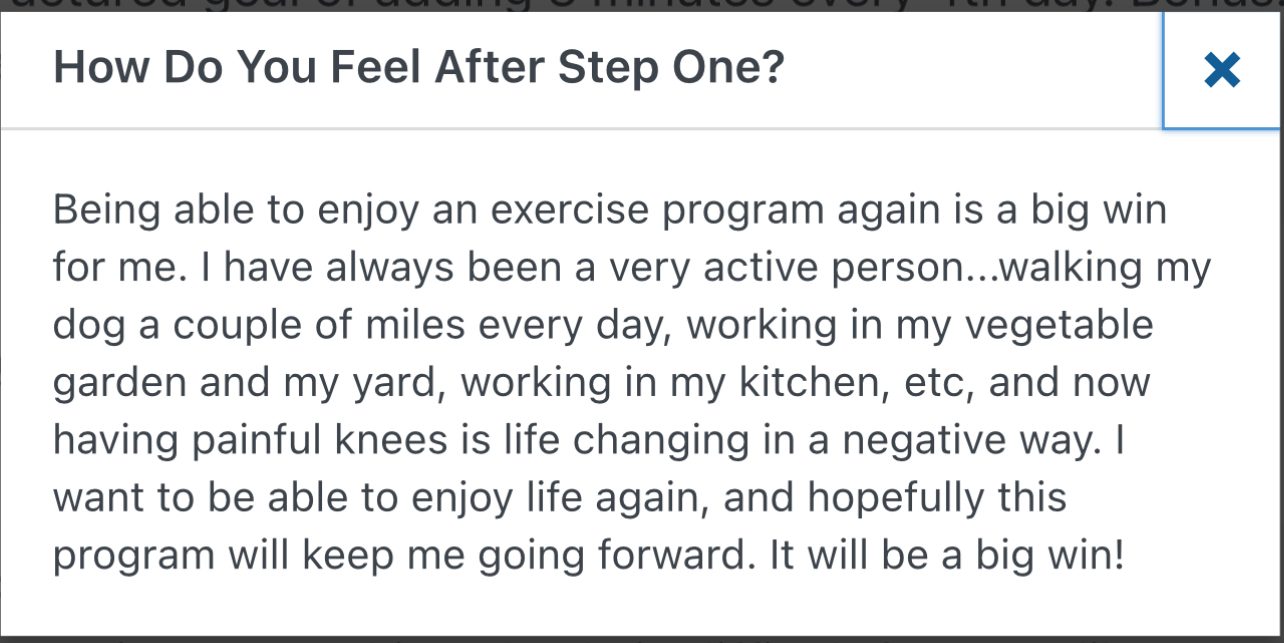
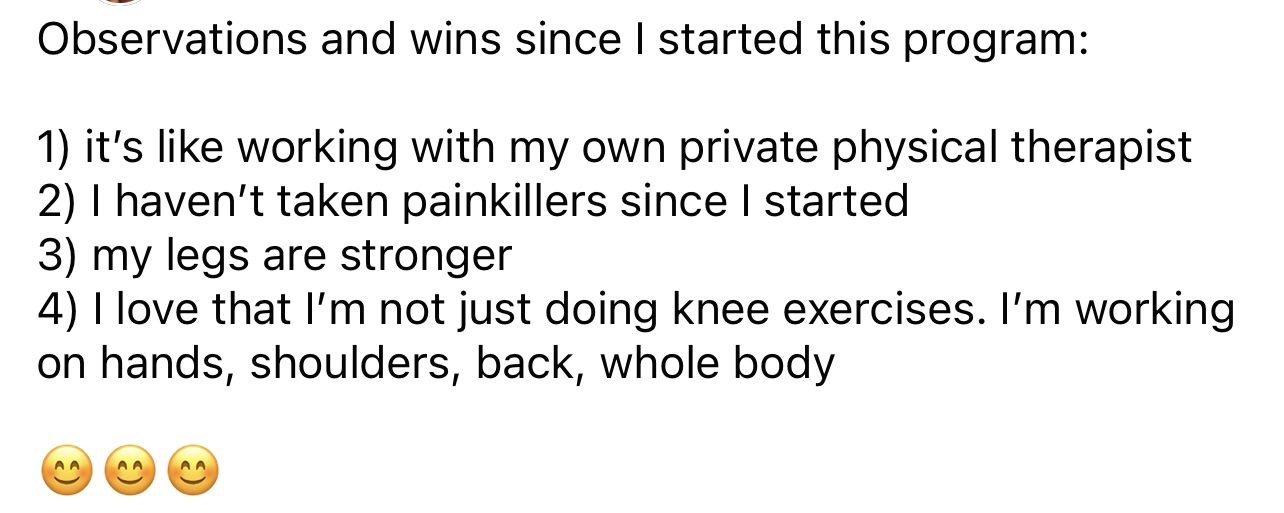
5. Look at the Whole Body
One of the biggest mistakes I see people making is only focusing on the painful joint. Meaning, if you were told you have knee osteoarthritis, you only do exercises that focus specifically on the knee.
This isn’t the fault of the person in pain either. Oftentimes when seeing healthcare professionals for a painful joint, they usually only take a look at that joint.
In reality, your whole body is connected. The way your hips move and how strong they are impact the knee.The way your ankle moves and how strong it is impacts the knee and the hip. The knee, hip and ankle impact how your spine moves. You cannot just isolate one joint.
When searching for relief from osteoarthritis, it is so important to strengthen your entire body. If you don’t, you open yourself up to making different compensations and this is one of the ways osteoarthritis can “spread”. It doesn’t necessarily spread like a disease. Continuing to compensate and move in different ways can lead to pain in other joints.
This is why a big focus of the Adventurers for Life membership is on FULL BODY workouts. This could be the key you are missing to pain relief…
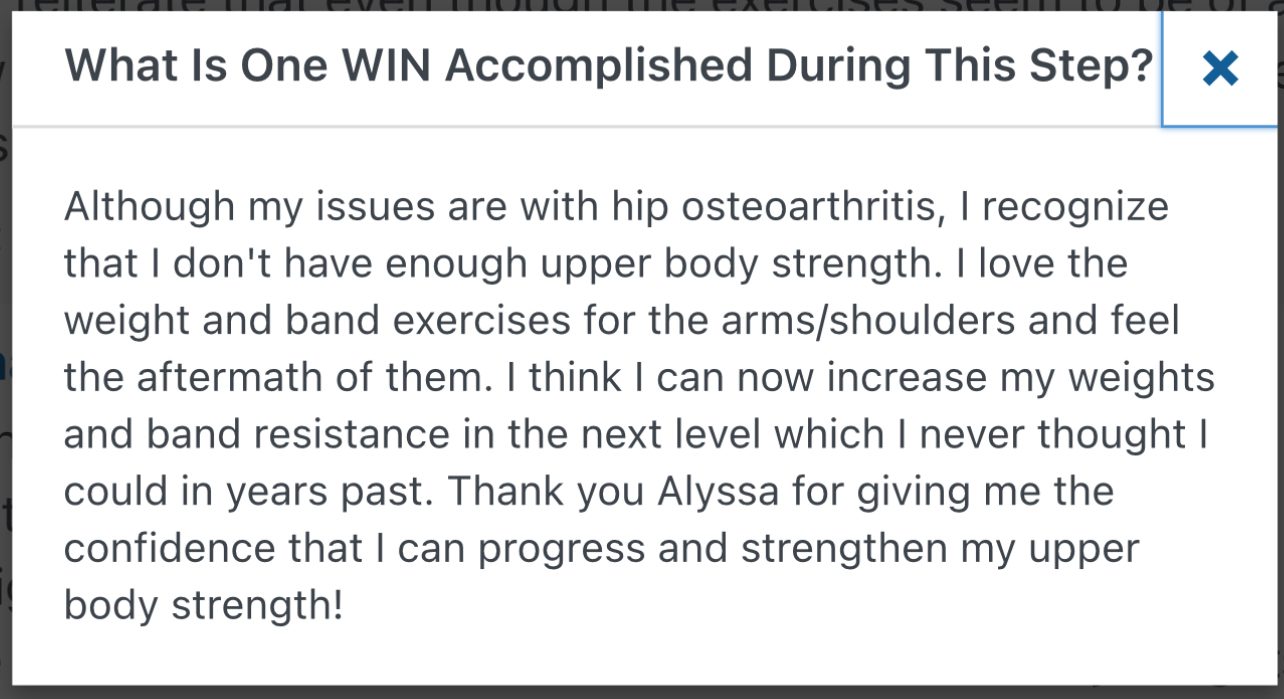
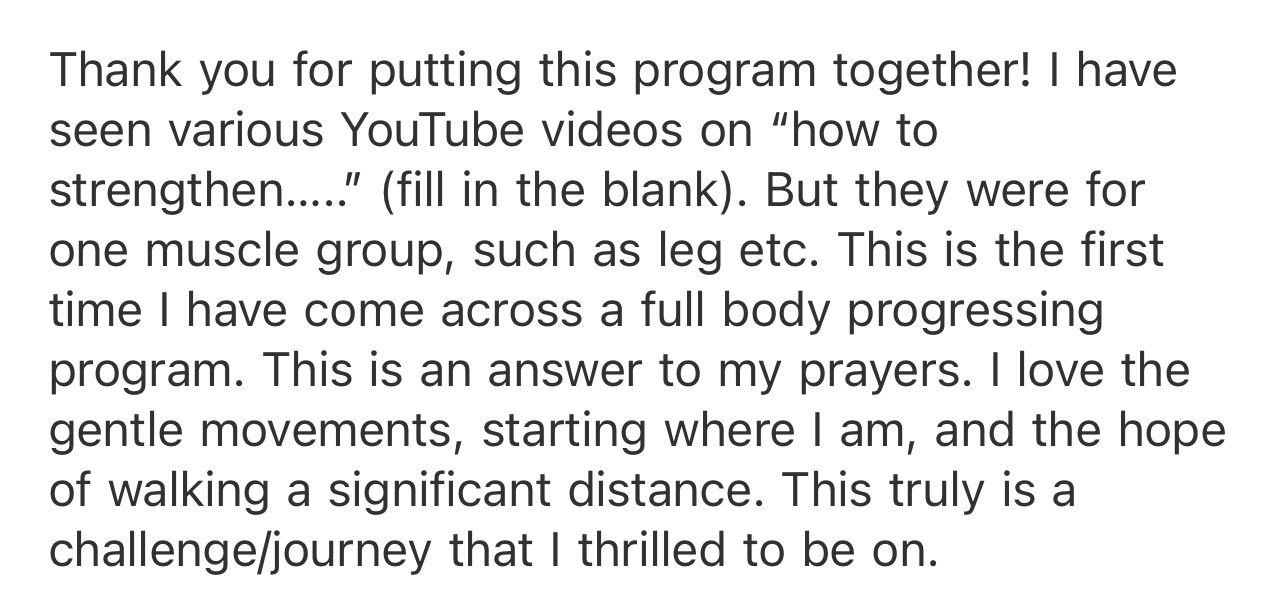
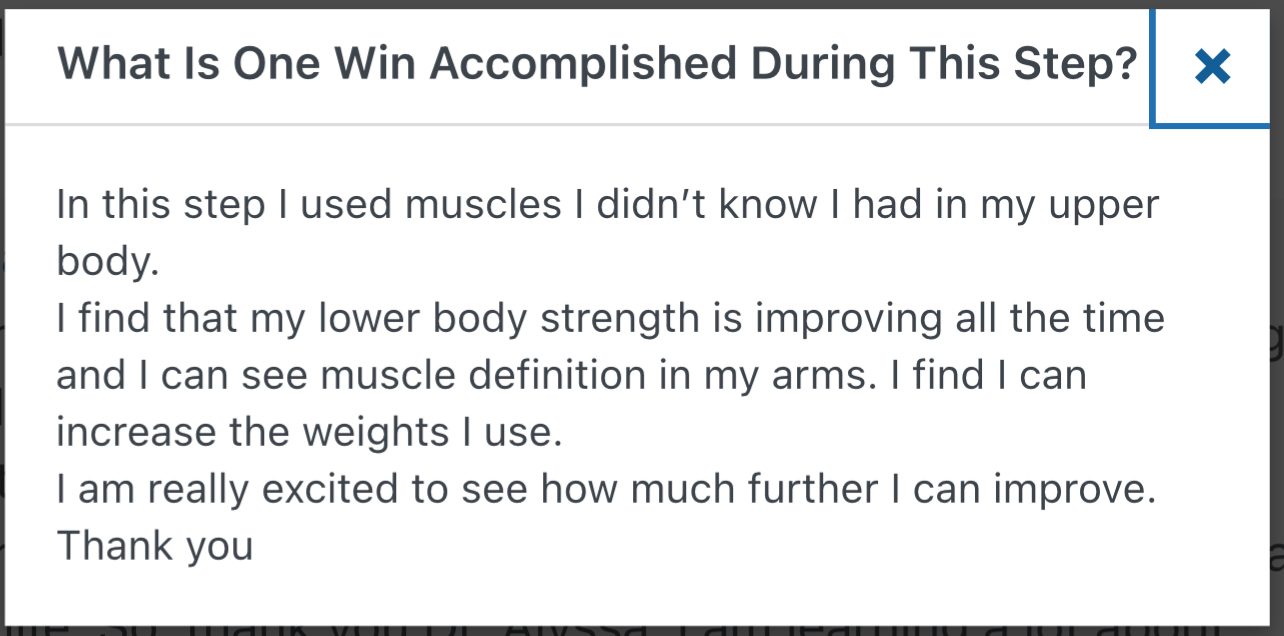
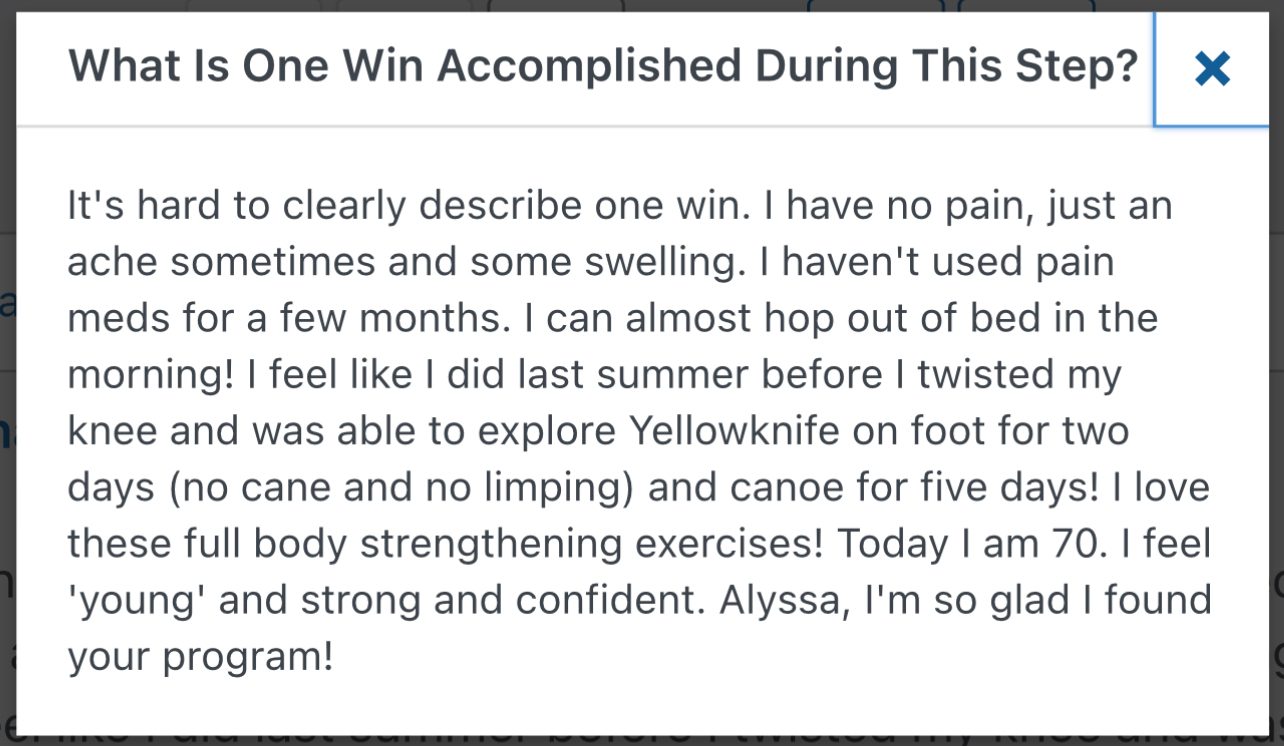
Conclusion
If you have osteoarthritis- it is possible to find joint pain relief. It is possible to feel strong and confident again. The key is believing that it’s possible. The more you know about the condition, the better informed you’ll be when making decisions. Share this post with anyone you know who may have been told the statements in the beginning of the article and is looking for where to go next.
If you’re unsure which exercises to start with and would like a short plan to get started, you can join in the 3 Day Arthritis-Friendly Walking Challenge where you’ll learn some of the best exercises to help you walk with ease again.
Alyssa Kuhn
Disclaimer: This article is for general informational purposes only. It should not be used to self-diagnose and it is not a substitute for a medical exam, cure, treatment, diagnosis, and prescription or recommendation. It does not create a doctor-patient relationship between Dr. Kuhn and you. You should not make any change in your health regimen or diet before first consulting a physician and obtaining a medical exam, diagnosis, and recommendation. Move Well Age Well, LLC and Dr. Alyssa Kuhn, PT, DPT are not liable or responsible for any advice, course of treatment, diagnosis or any conclusions drawn, services or product you obtain through this post, video or site. Complete all exercises at your own risk.

